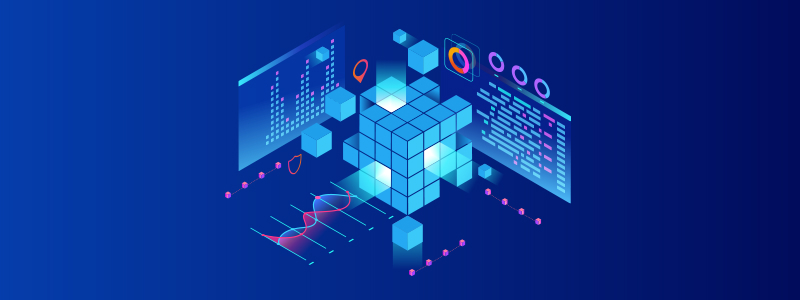
Data Centralization – A Guide to Modernizing Financial Analytics
What is data centralization?
Data centralization is the process of consolidating data from multiple sources into a single, centralized location, usually a database, a cloud data warehouse, or a data lake. Centralizing data makes it more accessible and secure and helps improve decision-making.
Unlike a general concept of data management, data centralization focuses on creating a single version of truth for an organization’s information and providing a complete view of its operations. Examples of centralized data systems include traditional databases managed by a single server or data warehouses where data is consolidated for analysis.
Even though it requires careful planning to manage issues like scalability and potential single points of failure, data centralization is especially valuable for organizations seeking complete data control and consistent reporting.
Why is data centralization important?
Data centralization is essential for organizations as it tackles a range of issues that hinder effective data management. When data is scattered across multiple systems, it creates obstacles that affect operational efficiency, data quality, and security. Consolidating data into a single repository addresses these challenges by providing a structured, reliable foundation for the entire organization.
Data centralization resolves the following problems:
- Fragmented information: Disparate data sources often lead to inconsistencies and a lack of a single source of truth, making it difficult for teams to access reliable information.
- Inefficient processes: Without centralized data, teams waste valuable time reconciling and validating data from multiple systems, slowing down decision-making and productivity.
- Security vulnerabilities: Distributed data storage can increase the risk of breaches and compliance issues, as it becomes harder to enforce uniform security protocols across the organization.
- Collaboration barriers: When data is siloed, departments struggle to share insights and collaborate effectively, which hampers innovation and coordinated efforts.
- Regulatory and compliance challenges: Managing and auditing data across different platforms can complicate adherence to industry standards and legal requirements, exposing the organization to potential risks.
What is the difference between centralized data and distributed data?
A closely related concept to data centralization is distributed data.
The main difference between centralized data and distributed data lies in how each is stored. In a centralized data repository, all the data resides in a single location. In distributed systems, however, the data is spread out.
Characteristics of centralized data
When data is centralized, the following characteristics are typically observed:
- Unified repository: All data is stored in a single database or data warehouse, providing a holistic view. Access to the data is typically controlled by a central authority or server.
- Consistent governance: Data policies, security protocols, and quality controls are applied uniformly.
- Simplified management: Data updates, backups, and maintenance tasks are streamlined due to a single point of administration.
- Simplified data integration: Merging data from disparate sources is facilitated, leading to a more coherent dataset for analysis.
- Potential bottlenecks: While consolidation simplifies oversight, it can also lead to performance issues if the central system is overloaded or experiences downtime.
Characteristics of distributed data
Distributed data is characterized by the following features:
- Multiple storage locations: In a distributed data system, data is spread across multiple locations or nodes within a network.
- Decentralized governance: There is no single central authority controlling all data; instead, data may be replicated or partitioned across different nodes. Each node typically manages its own subset of data independently, allowing local access and processing.
- Enhanced scalability and resilience: Distributing data reduces the risk of a single point of failure and often supports better load balancing.
- Complex integration: Aggregating data for organization-wide analytics is typically more challenging due to varying data structures and governance rules.
- Latency considerations: Data access and synchronization across nodes can incur delays, affecting real-time decision-making.
The shift from data silos to data centralization

Many organizations still operate with siloed data, limiting their ability to harness analytics’ power fully. Siloed data refers to information that is segregated or compartmentalized within an organization and stored in separate databases or systems managed by individual departments or teams. In such cases, data isn’t easily accessible or shared across the organization.
Siloed data often results from a combination of factors, including disparate systems, inconsistent data formats, varying access permissions, or lack of integration, i.e., different departments using their own databases without integrating them into a unified system. These factors collectively lead to challenges in data management.
Siloed Data Challenges
Organizations face several hurdles due to decentralized data. These challenges include:
- Legacy Systems: Outdated systems make it difficult to get the data you need into your data warehouse. Divergent data sources can lead to conflicting information, undermining accuracy and reliability.
- Analysis Difficulties: Data in diverse and scattered sources requires extensive effort to consolidate and interpret, limiting data analytics capabilities.
- Timely Decision-making Impediments: Data consolidation and reconciliation delays hinder prompt decision-making, which puts your company at a disadvantage to those able to process in real time.
Imagine a big organization with many departments, each responsible for its own financial data. The marketing department has its own set of spreadsheets tracking advertising expenses and campaign performance. The sales department has a CRM system that records customer transactions and revenue. The finance department has its own accounting software to manage financial statements.
The result? With data scattered across these silos, it’s challenging to gain a holistic view of the organization’s operations. The solution: Data centralization.
The Benefits of Data Centralization
Data centralization has several benefits to offer:
- Improved Decision-Making: Data centralization enables everyone in the team to get a holistic view of the data they work on. For example, finance teams gain a comprehensive understanding of cash flow, revenue streams, and financial metrics. Having the most up-to-date information and a complete picture of all your data allows for more accurate forecasting and strategic decision-making.

- Enhanced efficiency: Data centralization streamlines business operations by eliminating manual data gathering from disparate sources. In finance, it would mean speeding up the monthly and quarterly reporting exponentially. Hence, data centralization boosts efficiency and productivity, allowing professionals to focus on strategic analysis.
- Data integrity and compliance: Centralizing data leads to enhanced data integrity. It does so by maintaining data consistency and minimizing errors and discrepancies in the data sets. Additionally, complying with regulatory requirements is much easier when your data is organized and accessible.
- Simplified data analysis and reporting: Data centralization lays the foundation for advanced analytics. With all relevant data in one place, organizations can use advanced analytics techniques, such as predictive modeling and ML, to uncover valuable insights. It’s easier to perform data analysis and generate meaningful reports with all the data in one place. Analysts can access a unified dataset without the need for complex data integration or reconciliation processes.
- Scalability and Flexibility: As organizations grow, data centralization provides the scalability and flexibility needed to accommodate increasing data volumes and changing business requirements. The centralized repository can easily be expanded or modified to adapt to new data sources and analytical needs.
- Enhanced Data Security: Centralizing data facilitates better security measures and access controls as a single, centralized repository is easier to manage. Organizations can implement centralized security policies, encryption standards, and authentication mechanisms to protect sensitive data from unauthorized access.
- Improved Data Quality: Centralizing data improves its quality. During the centralization process data is cleansed and standardized based on strict company standards. This helps create a single repository of accurate and timely data, ensuring teams and management have more trustworthy data for analysis, potentially saving them hundreds of thousands of dollars in erroneous reporting and forecasting.
- Increased Cost Savings: Centralizing data increases cost savings by reducing duplication of efforts as all data is present in a single location. This deduplication also minimizes the need for redundant infrastructure and optimizes data management processes.
Roadmap for implementing data centralization
Data centralization requires careful planning and execution. Let’s explore the key steps organizations should consider:
- Assessing your current data infrastructure: Before centralizing data, evaluate your existing data infrastructure. Identify and document the current systems and tools, assess data quality, and identify any gaps or redundancies. For example, during the assessment, you may discover that different departments within your organization use multiple data sources, resulting in data duplication and inconsistencies.
- Define data centralization goals: Clearly define the goals and objectives of centralizing organizational data. Determine what benefits you aim to achieve, and how centralization aligns with your organization’s broader objectives. Are you hoping to achieve improved data quality? Or does your business require streamlined compliance? These are some questions your data centralizing plan should have answers to.
- Develop a data governance framework: Establish a framework to govern the centralized data effectively. Define data ownership, responsibilities, access controls, and security policies. Implement data quality standards, metadata management practices, and data lifecycle management processes. A data governance framework acts as a guide to managing data.
- Select centralized data architecture: Choose the appropriate centralized data architecture based on your organization’s needs. Consider options such as cloud data warehouses, data lakes, master data management (MDM) systems, or centralized databases. Also, evaluate factors like data volume, velocity, variety, and the complexity of analytical requirements.
- Data integration and migration: Develop a strategy for data integration and migration. Implement data integration tools, ETL processes, or your preferred method for efficient data movement.
- Choosing the right data centralization tools: Selecting the appropriate tools and technologies is critical for successful data centralization. Consider solutions that align with your organization’s specific needs, such as data warehouses, data integration platforms, or cloud-based analytics platforms. Collaborate with IT and finance teams to identify the most suitable tools that integrate seamlessly with existing systems.
- Ensure data security and compliance: Implement data security measures and compliance controls to protect data from unauthorized access, breaches, or misuse. This is especially important as a single, centralized repository can very well turn into a single point of failure. Encrypt sensitive data, implement access controls, audit trails, and monitoring mechanisms.
- Establish data standards and metadata management: Next, define data standards, naming conventions, and metadata management practices to ensure data consistency and usability. Document data definitions, lineage, and relationships to provide context and facilitate data discovery and understanding.
- Provide data access and analytics capabilities: Enable easy access to centralized data for users across the organization. Implement self-service analytics tools, data visualization platforms, or BI (Business Intelligence) solutions to empower users to derive insights and make data-driven decisions.
- Monitor and maintain centralized data infrastructure: Continuously monitor and maintain the centralized data infrastructure to ensure performance, reliability, and scalability. Monitor data quality and address issues promptly to optimize resource utilization.
Key challenges in implementing data centralization
Organizations must navigate a series of technical and operational hurdles to integrate various data sources into one unified system.
- Integration complexity: Merging various data sources with differing formats and standards demands robust data transformation and data mapping tools to ensure consistency.
- Legacy systems and data silos: Outdated systems and isolated repositories hinder seamless integration as they lack modern integration capabilities, resulting in fragmented data landscapes. Integrating legacy systems requires specialized strategies to modernize and consolidate data effectively.
- Security concerns: Consolidating sensitive data into one repository amplifies the risk of a single breach affecting the entire dataset, necessitating enhanced security protocols and strict adherence to regulatory compliance.
- Scalability issues: Ensuring that the centralized infrastructure scales with data volume is challenging as it involves managing exponential data growth, which requires significant upgrades and optimization. The need to dynamically allocate resources, optimize data processing, and reconfigure systems without causing disruptions makes scalability a complex issue.
Strategies and best practices for successful data centralization
Data centralization is a critical initiative for organizations aiming to improve decision-making. However, the success of this initiative depends on a well-planned approach:
Choosing the right tools
Modern platforms, such as cloud data warehouses, data lakes, and integration tools, offer scalable, flexible, and automated solutions. Key considerations when evaluating tools include:
- Scalability and performance
- Integration capabilities
- Automation and orchestration
- AI and ML support
- Cost efficiency
Having an implementation roadmap
A structured roadmap minimizes risks and ensures a smooth transition to centralized data architecture. The key steps include:
- Identifying all data sources, formats, and existing silos to determine integration needs.
- Aligning data centralization goals with business outcomes, such as faster reporting, improved compliance, or enhanced customer insights.
- Deciding between a data warehouse, data lake, or hybrid approach based on usage requirements.
- Removing redundancies, standardizing formats, and enforcing validation rules before migration.
- Running a proof of concept with a subset of data to identify potential issues before full-scale deployment.
- Executing the migration in phases to minimize downtime and mitigate risks.
Leveraging cloud solutions
Cloud-based data centralization offers flexibility, scalability, and cost-efficiency. Organizations can leverage:
- Multi-cloud and hybrid architectures to prevent vendor lock-in and ensure redundancy.
- Serverless data processing to optimize computing resources based on actual usage.
- AI-driven insights to automate anomaly detection, predictive analytics, and data classification.
Developing a data governance framework
A reliable governance framework empowers organizations to maintain data consistency, quality, and compliance in a centralized data environment. Organizations should establish:
- Data ownership and stewardship
- Data quality standards
- Metadata management
- Access controls
- Regular policy reviews
How Astera streamlines data centralization for enterprises
Astera offers an enterprise-grade data integration solution for creating and managing automated data pipelines. The AI-powered platform enables enterprises to consolidate company-wide data into the destination of their choice.
The platform’s capabilities span a wide range, from reading various file sources and database providers to supporting diverse file formats and transfer protocols. With over 100 connectors, integration across popular databases like Oracle, SQL Server, and cloud platforms like AWS S3, Google Cloud, and Azure becomes seamless.
Designing and scheduling dataflows for automated execution becomes straightforward with Astera’s built-in job scheduler, allowing complex task sequences to be easily visualized and implemented.
Ready to see it in action? Sign up for a demo or download a 14-day- free trial now!
Centerprise Can Make Your Data Centralization Process Fast and Easy – Try it Today!
Automate the process using Astera Centerprise’s simple drag-and-drop interface, connect to all the popular databases and cloud platforms, design and schedule dataflows and workflows… and more – all without writing any code!
Centralize All Your Data Now - 14 Day Free Trial! Astera AI Agent Builder - First Look Coming Soon!
Astera AI Agent Builder - First Look Coming Soon!

